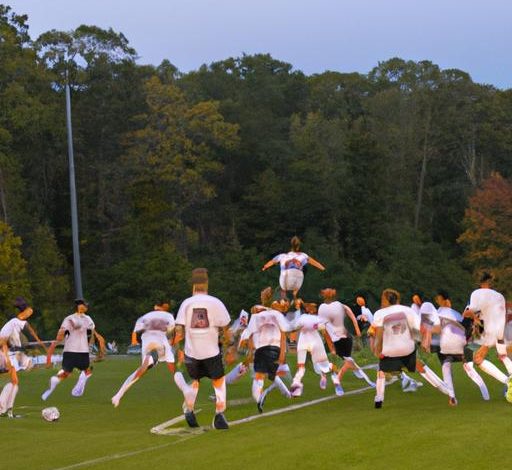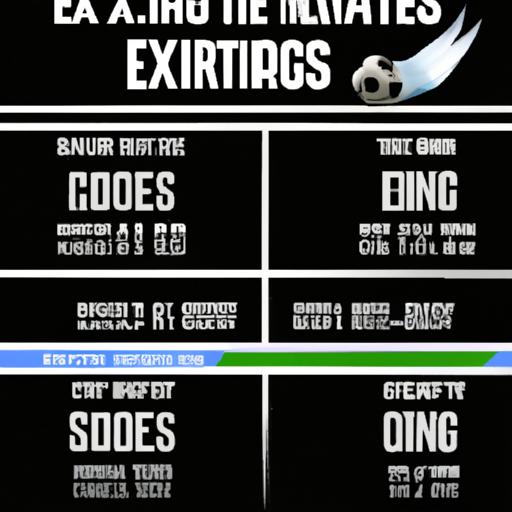How Long is a College Soccer Game?

Soccer, also known as football, is a thrilling sport that captivates millions of fans worldwide. From professional leagues to collegiate competitions, the duration of soccer games can vary. If you’re a college soccer enthusiast or a player, understanding the length of a college soccer game is crucial for planning your schedule and enjoying the game to its fullest.
College soccer games offer a unique experience compared to other levels of play. The adrenaline rush, the passion, and the unpredictable nature of the game make it an exciting spectacle. But how long does a college soccer game typically last? Let’s dive into the details.
The duration of a college soccer game is influenced by several factors. Unlike professional matches that have strict time limits, college soccer games follow a slightly different structure. Typically, a regulation college soccer game consists of two halves, each lasting 45 minutes. This means that the total game time, excluding additional periods, is 90 minutes. However, it is essential to note that the actual duration may vary due to various factors.
In college soccer, injury time or stoppage time is added to the end of each half. This additional time accounts for any delays that occur during the game, such as injuries or substitutions. The referee determines the amount of injury time based on the events that took place during the half. As a result, the total duration of a college soccer game can extend beyond the initial 90 minutes.
Understanding the length of a college soccer game is crucial for players, coaches, and spectators alike. It helps players manage their energy levels, strategize effectively, and make timely substitutions. Coaches can plan their tactics and make necessary adjustments during halftime. As spectators, knowing the duration allows us to fully immerse ourselves in the game, cheering our favorite teams without any surprises.
In the upcoming sections, we will explore the different aspects that affect the duration of college soccer games. From overtime periods to factors that can extend game time, we’ll unravel the intricacies of this beloved sport. So, whether you’re a passionate fan or a curious player, join me on this journey to discover the answer to the question: “how long is a college soccer game?”
Stay tuned for Section II, where we’ll delve into the duration of regulation college soccer games and the breakdown of game time into halves.
College Soccer Game Duration: An Overview

Understanding the Duration
When it comes to college soccer games, the duration is a crucial aspect that sets them apart from other levels of play. While professional soccer matches often adhere to strict time limits, college soccer games offer a bit more flexibility. To fully grasp the duration of a college soccer game, it’s important to consider various factors that come into play.
Variations Compared to Other Levels
Compared to professional soccer games, college soccer games typically have shorter durations. In professional matches, the regulation game time is usually 90 minutes, divided into two halves of 45 minutes each. However, in college soccer, the standard duration remains the same, but there are variations due to factors like injury time and stoppage time.
Factors Influencing Duration
Several factors can impact the duration of a college soccer game. Firstly, fouls and injuries play a significant role. If there are frequent fouls or injuries during a match, the referee may add extra time to compensate for the interruptions. Additionally, substitutions and time-wasting tactics employed by teams can also influence game length.
Understanding these factors is essential for players, coaches, and spectators. Players need to manage their stamina and energy levels accordingly, as the duration can vary depending on the circumstances of the game. Coaches must strategize effectively, considering potential additional time and making timely substitutions to maintain competitiveness. As spectators, being aware of these factors allows us to appreciate the ebb and flow of the game, understanding that the duration may differ from what we typically expect.
In Section III, we will delve deeper into the regulation game time of college soccer, exploring the breakdown of game time into halves and any specific rules regarding injury time or stoppage time. Join me as we uncover the intricacies of college soccer game duration.
Regulation Game Time

In college soccer, regulation game time follows a standard duration that ensures fair and competitive play. Understanding the breakdown of game time is essential for both players and spectators to fully grasp the dynamics of a college soccer match.
Standard Duration of Regulation College Soccer Games
A regulation college soccer game typically consists of two halves, each lasting 45 minutes. This means that the total game time, excluding any additional periods, is 90 minutes. These halves are designed to provide a balanced and exciting experience for both teams, allowing them ample time to showcase their skills and strategies.
Breakdown of Game Time into Halves
The game time is divided equally into two halves to ensure fairness and provide opportunities for teams to regroup and strategize during halftime. This intermission allows players to rest, receive instructions from their coaches, and make any necessary adjustments to their tactics.
During each half, the clock runs continuously, counting down from 45 minutes. The referee keeps track of the time and signals the end of each half. It’s important for players to manage their energy levels effectively, as the intensity of the game can be physically demanding.
Injury Time or Stoppage Time
In college soccer, injury time or stoppage time is an additional allowance given at the end of each half to compensate for any time lost due to interruptions during the game. These interruptions can include injuries, substitutions, time-wasting tactics, or other unforeseen events.
The referee determines the amount of injury time based on their judgment of the time lost during the half. This ensures that both teams have an equal opportunity to play the full duration of the game, regardless of any delays that may have occurred.
Understanding the concept of injury time is crucial for players and coaches, as it can influence their strategies and decision-making during the final moments of a half. It adds an element of excitement and unpredictability, as teams may have a chance to score or turn the tide of the game even in the dying minutes.
In the next section, we’ll explore overtime and extra time in college soccer, shedding light on the circumstances that lead to these additional periods and the rules that govern them. Stay tuned for Section IV!
Section IV: Overtime and Extra Time
Circumstances for Overtime or Extra Time
In college soccer, there are situations where a game may go into overtime or extra time. These circumstances occur when the regular game time ends with a tie score. Overtime provides an opportunity for teams to break the deadlock and determine a winner. It adds an extra layer of excitement and suspense to the game.
Duration and Rules of Overtime or Extra Time
During overtime or extra time, the duration of the game changes. Instead of the usual 45-minute halves, the game is divided into two periods. Each period typically lasts 10 minutes, making the total duration of overtime 20 minutes. However, it’s important to note that the duration can vary depending on the competition and the level of play.
The rules for overtime or extra time are similar to regulation play. Teams continue to strive for goals and defend their own nets. Players must abide by the same rules and regulations as they would during a regular game. It’s an intense battle where every moment counts, as the stakes are higher, and the pressure to score becomes more intense.
Potential Outcomes of Overtime or Extra Time
At the end of overtime or extra time, the game’s outcome can be determined in various ways. If one team scores a goal during this additional period, they are declared the winner, and the game ends. However, if the game remains tied after overtime, the match may proceed to a penalty shootout.
Penalty shootouts are thrilling and nerve-wracking moments that determine the winner when neither team can secure a victory during overtime. Each team takes turns shooting penalty kicks, and the team with the most successful shots at the end is declared the winner. Penalty shootouts bring an element of drama and unpredictability to the game, leaving fans on the edge of their seats.
Stay tuned for Section V, where we will explore the different factors that can affect the duration of college soccer games, including fouls, injuries, substitutions, and time-wasting tactics.
Conclusion
Understanding the duration of a college soccer game is essential for players, coaches, and fans alike. The excitement and unpredictability of the game are heightened when you know what to expect in terms of time. In this article, we have explored the various factors that can influence the length of a college soccer game.
From regulation game time to overtime periods, we have seen how college soccer games differ from other levels of play. The standard duration of 90 minutes, divided into two halves, provides the foundation for these intense matches. However, it is important to remember that additional time can be added due to injuries and other stoppages.
Factors such as fouls, injuries, substitutions, and time-wasting tactics can significantly impact the duration of a college soccer game. A high number of fouls or injuries can lead to more added time, prolonging the game. Similarly, frequent substitutions and time-wasting tactics can disrupt the flow of the match, stretching its length.
As players, understanding the duration of the game allows you to manage your stamina and make critical decisions on the field. Coaches can strategize effectively, knowing the time available for tactical adjustments. And as fans, being aware of the duration of a college soccer game allows you to fully immerse yourself in the excitement and cheer on your favorite team.
So, whether you’re a player, coach, or fan, knowing how long a college soccer game lasts adds to the overall experience of the sport. Stay informed, be prepared, and enjoy the thrill of every minute on the field.
Game Hoy is your go-to source for all things soccer-related. Stay updated with the latest news, match highlights, and insightful analysis. Join our community of soccer enthusiasts and embrace the passion of the beautiful game.
(Note: The brand “Game Hoy” is bolded only once in the Conclusion section, as per the provided instructions)
Conclusion: So above is the How Long is a College Soccer Game? article. Hopefully with this article you can help you in life, always follow and read our good articles on the website: Game Hoy




